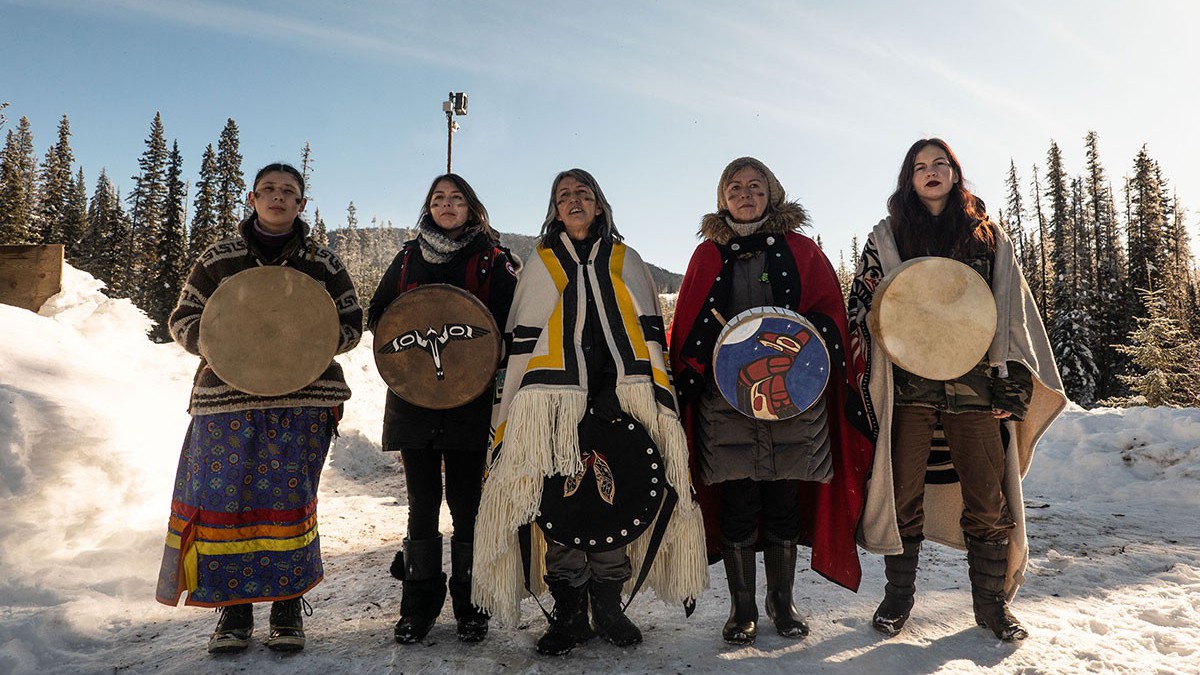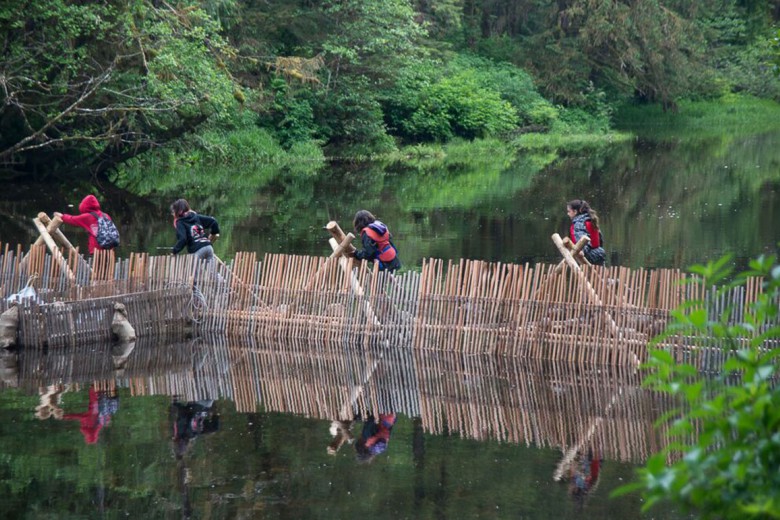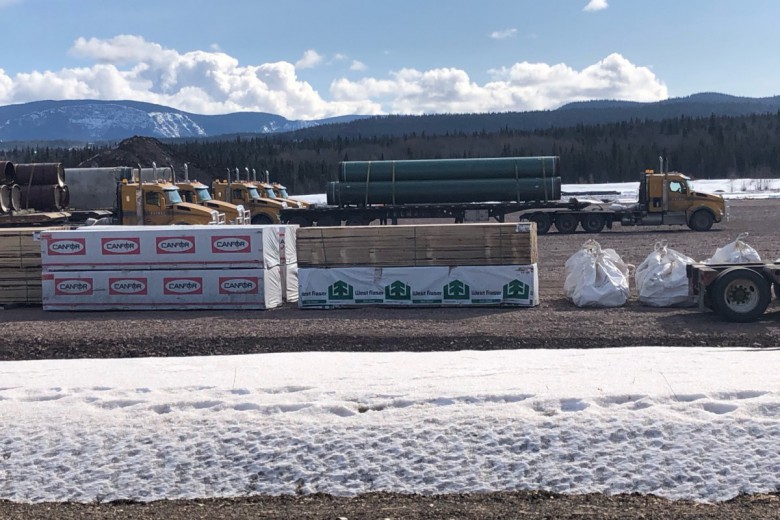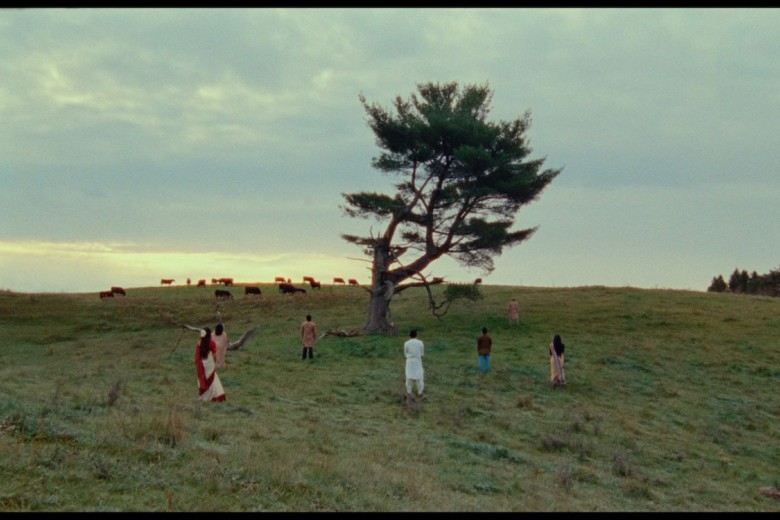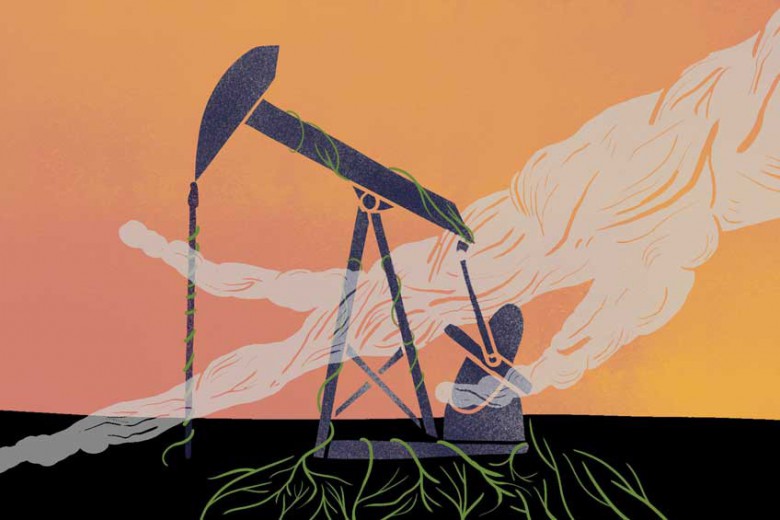We, the women of the original peoples of the world have struggled actively to defend our rights to self-determination and to our territories which have been invaded and colonized by powerful nations and interests. We have been and are continuing to suffer from multiple oppressions; as Indigenous [P]eoples, as citizens of colonized and neo-colonial countries, as women, and as members of the poorer classes of society. In spite of this, we have been and continue to protect, transmit, and develop our Indigenous cosmovision, our science and technologies, our arts and culture, and our Indigenous socio-political economic systems, which are in harmony with the natural laws of mother earth. We still retain the ethical and esthetic values, the knowledge and philosophy, the spirituality, which conserves and nurtures Mother Earth. We are persisting in our struggles for self-determination and for our rights to our territories. This has been shown in our tenacity and capacity to withstand and survive the colonization happening in our lands in the last 500 years.
—NGO Forum, UN Fourth World Conference on Women, 1995
It is often said that what happens to the land happens to the people. In a settler colonial society, degradation of the land is viewed as “normal” – necessary for the continued growth of wealth – and the effects on Indigenous bodies are viewed as an “acceptable risk” – a necessary sacrifice. Ultimately, it is a system that seeks to eliminate Indigenous Peoples in order to gain access to the lands and waters. This system also supports environmental violence – the capitalist exploitation of the environment and its associated harms.
Environmental violence
Environmental violence describes the ways that humans degrade the land, sky, and waters. It looks like pesticides that leach into waterways and poison people and animals; the massive wounds to Mother Earth that are the tarsands; mining uranium and then burying its radioactive waste; the acrid smoke of industry; burning garbage; and military operations that leave landmines and deadly chemical weapons behind.
In a settler colonial society, degradation of the land is viewed as “normal” – necessary for the continued growth of wealth – and the effects on Indigenous bodies are viewed as an “acceptable risk” – a necessary sacrifice.
Environmental violence doesn’t only affect Indigenous Peoples, but a lot of it occurs on our lands and in and around our communities; our lives are viewed as disposable and our destruction viewed as a necessity for the profits of corporations and the Canadian government. Because environmental violence occurs in close proximity to us, it can have a multitude of harmful effects. Cancers and other illnesses ravage our bodies, along with reproductive health issues like birth defects and infertility. Our traditional ways of caring for one another are broken down, leading to increased rates of violence, poverty, drug and alcohol use, and crime. And our spirits and minds are degraded, resulting in trauma, loss of culture and self-determination, and – for many people – death by suicide.
These consequences make clear the connections between the health and safety of the lands and the health and safety of Indigenous bodies – on all fronts, not just physically but also mentally, emotionally, and spiritually. There is a sad irony to this, though, as Indigenous Peoples are among those least responsible for environmental degradation but are most often subjected to its fallout.
Gender-based environmental violence (GBEV)
There are attitudes in the industry that are still there since colonisation: that Indigenous women are considered Indians, savages and prostitutes.
—Michèle Audette, former MMIWG National Inquiry commissioner
Indigenous trans, genderqueer, and Two-Spirit people, women, and girls are even more deeply affected by environmental violence – this is what we mean when we talk about gender-based environmental violence. It’s a consequence of patriarchy’s devaluation of anyone who is not a cisgender man, but it also stems from the traditional roles that these folks often hold that require an intimate connection to the lands and waters. They often grow food and prepare it. They pick medicines. They teach our traditional ways of being out on the land. And for some, they carry the next generation.
There is a sad irony to this, though, as Indigenous Peoples are among those least responsible for environmental degradation but are most often subjected to its fallout.
But, as we know from the epidemic of missing and murdered Indigenous women, girls, trans, and Two-Spirit people (MMIWG2S), when people lose respect for the land, they lose respect for the people. One of the clearest examples of this is the “man camps” that are part of the extractive industry.
These camps are set up when large numbers of men move into Indigenous territories in order to construct or maintain mines or pipelines. They’re often correlated with increases in sexual and domestic violence, STIs, increased use of drugs and alcohol, trafficking, and murders or disappearances.
The toxins that resource extraction leaches into the soil, air, and water can also make their way into people’s bodies, accumulating in body fat, with severe impacts on reproductive systems, pregnant people, and babies. A 2018 study in Grassy Narrows (Asubpeeschoseewagong First Nation) found that the children of mothers who regularly consumed mercury-contaminated fish during their pregnancies were four times more likely to have learning disabilities or nervous-system disorders. This poisoning has plagued the First Nation for decades, as tonnes of mercury have been dumped into the local river system by Reed Paper Ltd.
GBEV, colonization, and oppression
Settler colonialism is a persistent social and political formation in which newcomers/colonizers/settlers come to a place, claim it as their own, and do whatever it takes to disappear the Indigenous Peoples that are there. Within settler colonialism, it is exploitation of land that yields supreme value. In order for settlers to usurp the land and extract its value, Indigenous Peoples must be destroyed, removed, and made into ghosts.
—Maile Arvin, Eve Tuck, & Angie Morrill, “Decolonizing Feminism: Challenging Connections Between Settler Colonialism and Heteropatriarchy”
Settler colonialism is not merely a one-off event, but a structure – one that seeks to eliminate Indigenous Peoples. This elimination has taken various forms in the past and in the present, including boarding schools, religious conversion to Christianity, and the privatization and destruction of land. This structural violence has been imposed onto both the bodies of Indigenous Peoples and onto the land itself – again, what happens to the land happens to the people.
Gender-based environmental violence itself is necessary for colonialism’s continuation. When the land is destroyed, the carriers of the next generations and our people are destroyed, allowing for greater access to our lands. In various Arctic Indigenous communities, hazardous chemicals from military waste sites and the transport of persistent organic pollutants (long-lasting pesticides and industrial chemicals) bioaccumulate through the food web, contaminating traditional sources of food, medicine, and water. Climate change is only speeding up the rate at which these chemicals move through the environment. These toxins are then ingested by Arctic Indigenous Peoples and directly affect those giving birth, newborns, and children, as shown in above-average rates of miscarriages, neo-natal deaths, low birth weights, birth defects, reproductive health problems, and cancer. This communal poisoning shortens lifespans and infringes on cultural practices – forcing Arctic Indigenous Peoples to choose between chemical-laced traditional foods and expensive, store-bought foods that lack nutrition. This gradual elimination of Arctic Indigenous Peoples makes the land more accessible, so that the forces of colonization and environmental extraction can continue unabated.
This communal poisoning shortens lifespans and infringes on cultural practices – forcing Arctic Indigenous Peoples to choose between chemical-laced traditional foods and expensive, store-bought foods that lack nutrition.
GBEV is also tied to the patriarchal mindset that seeks to control Indigenous women, fulfilling the colonial desire for power over the bearers of Indigenous Nations and, therefore, the land. The perpetrators of residential schools (the Government of Canada and Catholic, Anglican, Methodist, Presbyterian, and United churches) further ingrained patriarchy, dividing men and women and devaluing “women’s work.” Because children were removed at ages at which they would usually learn traditional roles and responsibilities, children were also forced to assimilate into Eurocentric, patriarchal gender roles.
But despite this legacy of trauma, change is possible.
Resistance
Indigenous women remain carriers of lifesource water with the responsibility to ignite acts of refusal rooted in lineage, ancestral knowledge, and the human right to exist in a good way.
—Temryss MacLean Lane, “The Frontline of Refusal: Indigenous Women Warriors of Standing Rock”
Indigenous women’s resistance – rooted in community, future generations, and ancestral struggles for land and livelihood – is a feminist resistance, but it is also fundamentally anti-capitalist and anti-imperial, demanding respect and protection ... not only of women’s bodies, but also of land, water, mother earth, culture, and community.
—Heather Gies, “Facing Violence, Resistance is Survival for Indigenous Women”
To envision what resistance to GBEV can look like in practice, I spoke to Dayna Danger – a Two-Spirit/Queer, Métis/Saulteaux/Polish visual artist.
Danger explains to me that she has felt pushed to the fringes of Indigenous ceremonial and cultural spaces as well as white-dominated queer spaces. According to Danger, this reality often goes unnoticed: “The patriarch invisibilizes us,” she tells me. “We don’t even exist. What do you do with people that don’t even exist?” In recent years, the lack of queer-friendly spaces for Indigenous people has led Danger and others to create hide-tanning camps for Two-Spirit people, Indigenous women, and Indigenous folks all along the spectrum of queer identities.
Hide tanning is a difficult process and one that is tough to do alone. It takes hours of scraping to remove the flesh and hair from the hide, followed by cycles of soaking (in water, followed by solutions) and wringing the hide, ending with softening and finally smoking it. It’s a communal process that brings people together over the course of many days. People in the camp make food together, share language and techniques, and tell stories. It’s also an intergenerational space that helps to heal the harms of colonization – Danger spoke of Elders who revisited memories of their mothers and grandmothers as they participated in the hide camps and she also spoke of youth learning how to use all parts of an animal. It’s stories like this that showcase the beauty and multi-faceted nature of land-based education. A hide camp doesn’t just mean learning the many steps involved in tanning hide – it’s a labour of love that teaches confidence, patience, and connection.
Much of this resistance does not name GBEV specifically but works against it nevertheless, providing alternatives to extractive industries and solutions to climate change.
Just as no part of an animal is disposable, no person is disposable. Two-Spirit people are resistant; they have already lost so many things because of colonization and patriarchy – names, traditional roles, acceptance – but they also continue to lead the way in creating spaces that are safe and accepting for the most marginalized among us.
Indigenous trans, genderqueer, and Two-Spirit people, women, and girls are often at the front lines of resistance against environmental violence, disrupting colonial notions of power, knowledge, and progress. Much of this resistance does not name GBEV specifically but works against it nevertheless, providing alternatives to extractive industries and solutions to climate change.
These solutions look like building Indigenous energy independence through micro grids for solar energy, wind farms, and small-scale, run-of-the-river hydro; practising food and water independence by opposing commercial fishing farms that infringe on Indigenous Rights, hunting, saving seeds, and harvesting traditional foods, medicines, and rainwater; strengthening land-use knowledge, like controlled burning; and protecting biodiversity.
What happens to the land happens to the people – and if we heal the land, we can heal ourselves, too.


